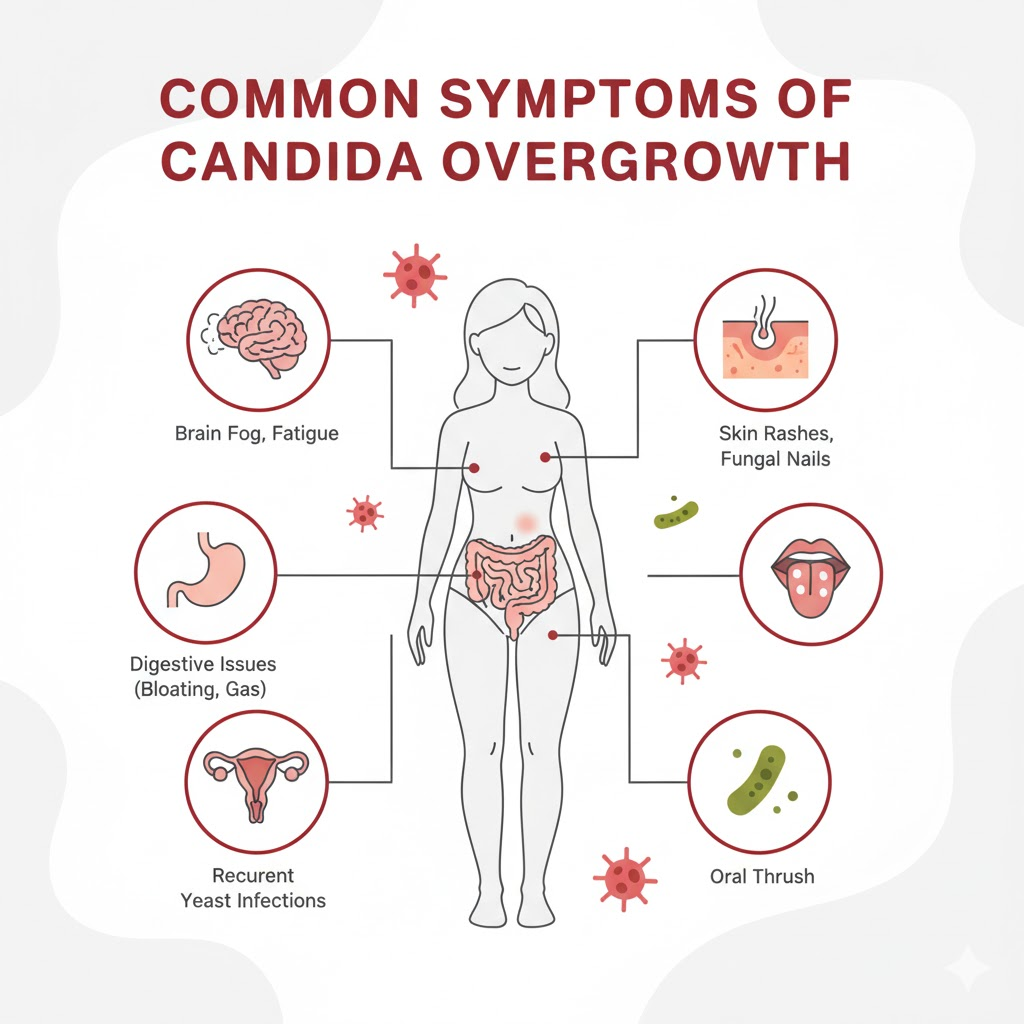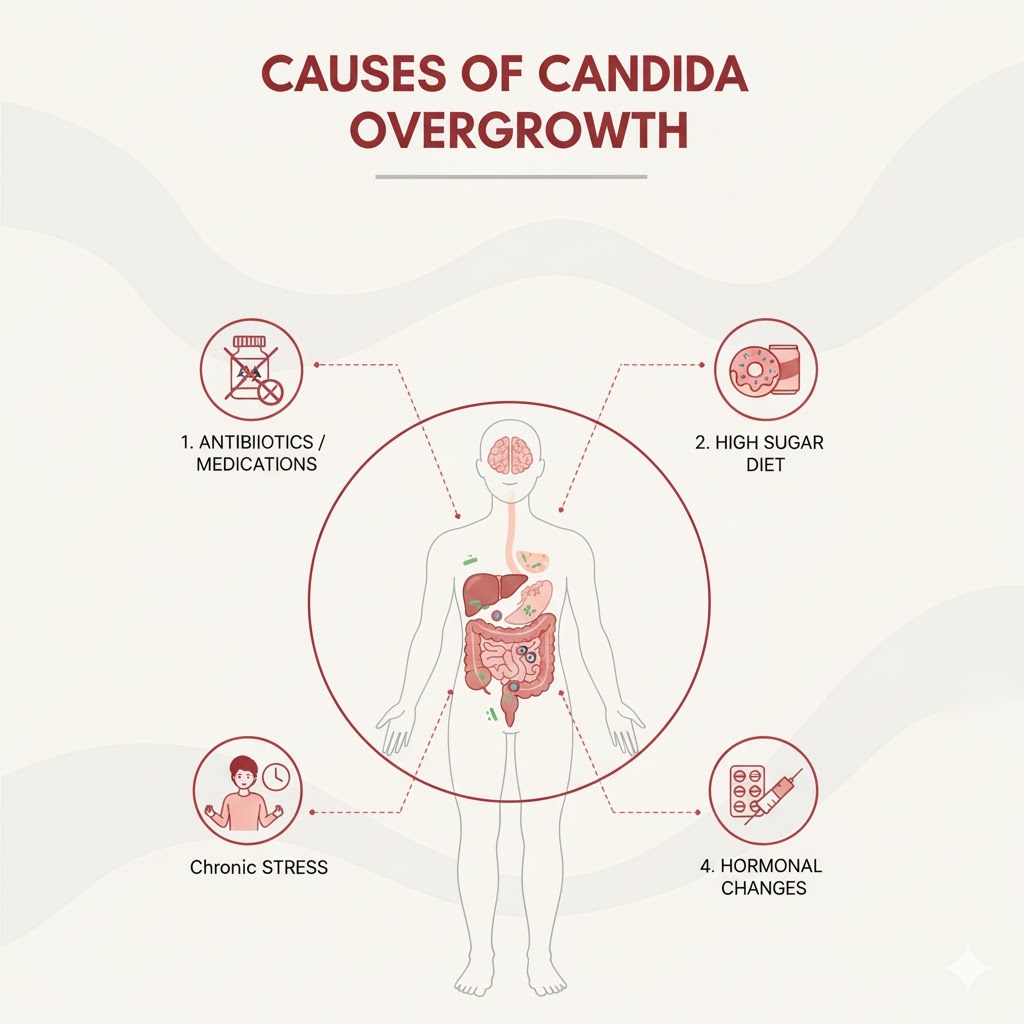When it comes to women’s health, understanding the often-overlooked aspects of our bodies can be a game changer. One such aspect is the role of Candida, a type of yeast that resides in our bodies and can impact both vaginal and gut health. While many might think of it merely as an inconvenience, Candida overgrowth can lead to various uncomfortable symptoms and complications.
It’s time to dive into this crucial topic—understanding Candida: the key to women’s vaginal and gut health could set you on the path toward greater well-being. Whether you’re experiencing persistent discomfort or simply looking for ways to enhance your overall health, getting educated about Candida is essential. Let’s explore what it is, how it affects us, and what we can do about it!
What is Candida and Why is it a Concern for Women?

Candida is a type of fungus, or yeast, that naturally exists in our bodies. It’s usually harmless and lives in harmony with other microorganisms, especially within the vaginal and gut environments. However, when the balance tips in favor of Candida, it can lead to overgrowth.
For women, this imbalance often raises red flags. An overabundance of Candida can result in infections like vaginal candidiasis—commonly known as a yeast infection—which brings discomfort and irritation. Symptoms may include itching, unusual discharge, and even pain during intercourse.
Beyond the vagina, an excess of Candida can disrupt gut health too. Bloating, gas, fatigue—all these signs could indicate your body is dealing with more than just a minor inconvenience.
Understanding the implications of Candida for women’s health can’t be overstated; its effects ripple through various aspects of well-being.
Common Symptoms of Candida Overgrowth
Candida overgrowth can manifest through a variety of symptoms that may vary from person to person. For many women, the most noticeable signs are vaginal discomfort and unusual discharge. It’s not just about itching; it can feel like an unwelcome presence that disrupts daily life.
Digestive issues often accompany this condition as well. Bloating, gas, and irregular bowel movements might hint at an imbalance in gut flora caused by Candida proliferation.

Fatigue is another common symptom that shouldn’t be overlooked. Many women report feeling unusually tired or mentally foggy when dealing with candida-related challenges.
Skin problems may also arise, including rashes or persistent acne flare-ups. These visible signs remind us how interconnected our body systems truly are.
Recognizing these symptoms early is crucial for prompt action towards better health and recovery strategies tailored to individual needs.
Causes of Candida Overgrowth
Candida overgrowth can stem from various factors that disrupt the delicate balance of our microbiome. A primary culprit is an unhealthy diet, particularly one high in sugar and refined carbohydrates. These foods fuel yeast growth and create an environment ripe for imbalance.
Hormonal fluctuations also play a significant role. Women may experience shifts during menstruation, pregnancy, or menopause that can trigger Candida proliferation. Stress further complicates matters by weakening the immune system, making it harder for the body to keep Candida in check.

Antibiotics are another major factor. While they treat bacterial infections effectively, they can also kill beneficial bacteria essential for maintaining vaginal and gut health, allowing Candida to thrive unchecked.
Underlying health conditions like diabetes or autoimmune disorders may predispose individuals to overgrowth by altering immune response or creating favorable conditions for yeast expansion.
Treating Candida: Conventional and Natural Approaches
Treating Candida can be approached through both conventional and natural methods. Many healthcare providers typically prescribe antifungal medications to combat overgrowth. These treatments target the yeast directly but may come with side effects.
On the other hand, natural approaches often focus on dietary changes and lifestyle modifications. Incorporating probiotics into your diet can help restore balance in the gut microbiome. Foods rich in fiber also play a crucial role in supporting digestive health.

Herbs like oregano oil and garlic have antifungal properties as well, making them popular choices for those seeking alternative remedies. Additionally, reducing sugar intake is essential since yeast thrives on sugars.
It’s vital to consult with a healthcare professional before starting any treatment plan to ensure it aligns with your specific situation and needs. Each woman’s experience with Candida is unique, so personalized strategies are key for effective management.
Maintaining a Healthy Vaginal and Gut Microbiome
A balanced microbiome is essential for women’s health. This delicate ecosystem thrives on diversity, supporting both vaginal and gut health.
Incorporating probiotics into your diet can help restore balance. Foods like yogurt, kefir, sauerkraut, and kombucha are great sources. They introduce beneficial bacteria that fortify your body’s defenses.
Moreover, a fiber-rich diet plays a crucial role. Whole grains, fruits, and vegetables not only nourish your body but also promote healthy digestion. Fiber acts as food for good bacteria in the gut.
Stay hydrated to support overall function. Drinking plenty of water helps maintain moisture in the vaginal area while aiding digestion.
Regular exercise boosts circulation and enhances immune function too. Even simple activities like walking can make a difference in maintaining a healthy microbiome balance without overwhelming your routine.
Preventing Candida Overgrowth in the Future
Preventing Candida overgrowth involves a proactive approach to your lifestyle and diet. A balanced diet rich in whole foods can work wonders for maintaining harmony in your body.
Focus on reducing sugar intake, as excess sugar can fuel yeast growth. Opt for complex carbohydrates instead, like whole grains and legumes. These options provide energy without contributing to an imbalance.
Incorporating probiotics into your routine is essential too. Yogurt, kefir, and fermented vegetables introduce beneficial bacteria that help keep Candida levels in check.
Don’t overlook stress management techniques either. Chronic stress weakens the immune system, making it easier for Candida to thrive. Practices such as yoga or meditation can be effective allies.
Prioritize hydration by drinking enough water daily. Staying hydrated supports digestion and overall health while helping flush out toxins from your system.
Conclusion
Understanding Candida plays a crucial role in women’s vaginal and gut health. This yeast is often overlooked, yet it can have significant impacts on overall well-being. By recognizing the symptoms of Candida overgrowth, individuals can take proactive steps to address any concerns.
Identifying the causes of this imbalance is essential for prevention and treatment. Whether through conventional medicine or natural remedies, there are effective strategies available for managing Candida levels.
Maintaining a balanced microbiome should be part of every woman’s wellness routine. Simple lifestyle choices can contribute greatly to long-term health. From dietary adjustments to mindful hygiene practices, these changes foster an environment where beneficial bacteria thrive.
Staying informed about Candida empowers women to take charge of their health journeys confidently. Emphasizing awareness and education leads to better outcomes in preserving both vaginal and gut health for years to come.






